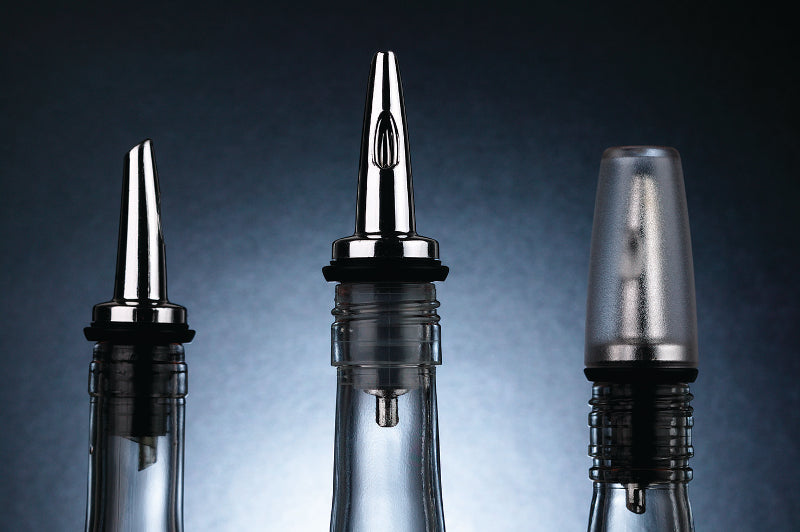
The alcohol beverage industry is booming!
Distilleries are pushing boundaries with innovative flavors and unique bottle designs that stand out on crowded shelves, while bars are vying to create a distinct and memorable customer experience.
This constant evolution, however, presents a hidden challenge: finding the right speed pourers for the ever-growing variety of spirits bottle sizes.
Speed pourers are essential tools in bars and distilleries, streamlining service and promoting consistency. However, traditional speed pourers, with their limited size range, often struggle to fit the diverse shapes and neck diameters of these new, eye-catching bottles. This leads to a frustrating reality—leaks lead to wasted liquor, a messy work environment, and ultimately, a dent in profits.
Packaging experts, Oberk, explain that there are two types of bottle neck styles for spirits, screw top or a bar top:
A screw top is similar to many common glass or plastic bottles, where a plastic or metal continuous thread (CT) cap is screwed on.
"Bar top spirits bottles are generally available with two neck sizes, 18.5 mm and 21.5 mm. While there many other neck sizes available on the market, these two are the most common. These spirits bottles accept cork shank bar tops that are friction fitted onto the neck opening. As a general rule, you want to use a cork that is 1 mm larger to ensure that your top fits tightly."
But when new brands enter the market, this isn't necessarily the case anymore. Think Patron, Pyrat or those following in the footsteps of Don Julio.
So, if your pourers are only designed to fit two standard neck sizes, what now?

Poor fit = poor pour
Ever notice bartenders grimace when you order a drink from a large bottle? Many bartenders struggle with larger liquor bottle sizes that are hard to pour, mainly due to the amount of lost liquor from bottle neck leakage, whilst trying to serve either into a jigger, glass or tin.
Leaking bottles not only cost money, but they also slow things down. Fiddling with a leaky pourer and trying to capture every drop adds valuable seconds to each drink. It’s not surprising then that bartenders experiencing operational issues will opt out of using these 'problem' bottles, substituting other brands that are easier to serve (even if not on the cocktail menu).
In the middle of a busy bar service, the choice does come down to bartender’s convenience, comfort and preference.
Yet, as we discuss in our pourers blog, pour spouts might seem a small and insignificant bar tool, but they not only give you that longed for speed, they also provide pouring accuracy and reduced wastage. Beyond these practical benefits, pour spouts also contribute to a more professional and efficient bar environment. This instills confidence in customers, knowing their cocktails are crafted with care and consistency.
Alex O’Brien from Lola Jeans in Newcastle and Tynemouth found upgrading speed pourers “saved a case of vodka in two months", according to Imbibe.
If speed pourers are such an essential tool, but size is an issue, then what is the answer?
One size can't fit all?
Don't worry, that's a rhetorical question! We know the answer to be the optimised bar tool design. Or in other words, picking pourers that will work across the range of bottle neck sizes: Überbartools™ ProFlow.
These speed pourers come in four different cork sizes designed to fit the widest ranges of bottle neck and volume sizes. The secure seal created by the ProFlow design eliminates messy drips and frustrating leaks. This translates to significant cost savings on your prized liquors.

ProFlow is ergonomically designed and replaces ill-fitting corks that cause leakage and liquor waste. With a modular design, the ProFlow range can give you more options with replaceable parts to boot so you can keep the pourers in top shape without needing to replace the entire unit. This also allows you to customize your pourer selection, ensuring you have the right fit for and colour to complement every bottle in your bar.
The world of spirits is constantly evolving, with new and interesting bottles hitting the shelves all the time. Don't let limitations with your speed pourers hinder your journey towards a premium bar experience.
Embrace the cool bottles, embrace ProFlow. With its universal fit and innovative design, ProFlow ensures your bar stays ahead of the curve, both in style and efficiency.


